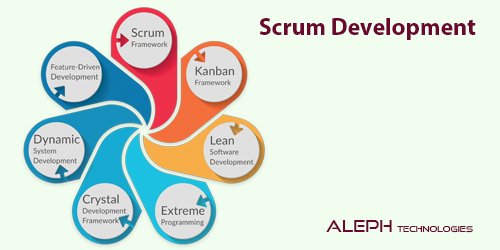The Definition of Ready (DoR) in Agile Methodology
Agile methodology stands out as a dynamic approach that emphasizes adaptability, collaboration, and continuous improvement. Central to Agile's success is its reliance on iterative development cycles and the use of specific practices and principles to guide teams toward delivering value efficiently. One such practice is the Definition of Ready (DoR), a concept crucial for ensuring that user stories are adequately prepared for implementation within Agile frameworks.
What is the Definition of Ready (DoR)?
The Definition of Ready is a set of criteria or conditions that a user story must meet before it can be accepted into an iteration or sprint for development. It serves as a checklist that ensures the team has gathered and analyzed the necessary information, clarified expectations, and addressed potential roadblocks before committing to work on the story.
Key Components of the Definition of Ready
Clear and Understandable
The user story must be written in a concise and understandable manner, using a standardized format such as the classic "As a [user], I want [action], so that [benefit]" structure. This clarity ensures that all team members have a shared understanding of what needs to be delivered.
Acceptance Criteria
Each user story should come with well-defined acceptance criteria that outline the specific conditions that must be met for the story to be considered complete. These criteria serve as the basis for testing and validation and help prevent misunderstandings between the development team and stakeholders.
Dependencies Identified
Any dependencies or prerequisites necessary for the successful completion of the user story should be clearly identified. This includes any external resources, data, or tasks that need to be in place before work can begin.
Estimable
The user story should be small enough to be estimated accurately by the team. This involves breaking down larger features or tasks into smaller, more manageable chunks that can be easily estimated in terms of time, effort, and complexity.
Priority Defined
The relative priority of the user story should be established within the product backlog or sprint backlog. This helps the team understand the importance of the story in relation to other work and enables effective prioritization during sprint planning.
Benefits of Implementing the Definition of Ready
Reduced Ambiguity
By clearly defining expectations and requirements upfront, the Definition of Ready helps reduce ambiguity and misunderstandings among team members and stakeholders.
Improved Planning
Teams can better estimate and plan their work when user stories are adequately prepared and refined before entering the sprint backlog. This leads to more accurate sprint forecasts and a higher likelihood of meeting sprint goals.
Enhanced Collaboration
The process of defining readiness encourages collaboration and communication within the team. By discussing and refining user stories together, team members gain a deeper understanding of the work at hand and can identify potential challenges early on.
Increased Efficiency
By ensuring that user stories are ready for development before they enter the sprint, teams can avoid costly delays and rework caused by incomplete or poorly defined requirements.
Challenges and Consideration
While the Definition of Ready can significantly improve the effectiveness of Agile teams, implementing and maintaining it requires effort and discipline. Some common challenges include:
Resistance to Change: Teams accustomed to less structured approaches may initially resist the additional overhead introduced by the Definition of Ready. Clear communication about the benefits and purpose of the practice can help mitigate this resistance.
Balancing Flexibility and Rigidity: While the Definition of Ready provides structure and clarity, teams must also remain flexible and adapt to changing requirements and priorities. Striking the right balance between flexibility and rigidity is essential for success.
Continuous Improvement: The Definition of Ready is not a one-time exercise but rather an ongoing process of refinement and improvement. Teams should regularly review and update their criteria based on feedback and lessons learned from previous iterations.
In conclusion, the Definition of Ready is a valuable tool for Agile teams seeking to deliver high-quality software efficiently. By establishing clear criteria for readiness and ensuring that user stories are adequately prepared before development begins, teams can minimize uncertainty, streamline planning, and ultimately deliver greater value to their stakeholders.
Related posts
-

Scrum Development: A Comprehensive Overview 🚀
Mar 25, 2024 -

How to Build a Large Agile Organization: Strategies for Success 🌟
Mar 25, 2024 -

Are Agile Methodologies Truly Agile? Debunking the Myth
Mar 25, 2024 -

The Technical Debt
Mar 22, 2024

Please login to check comments